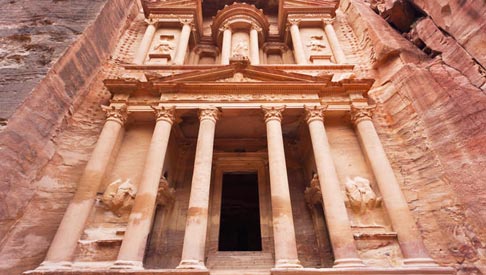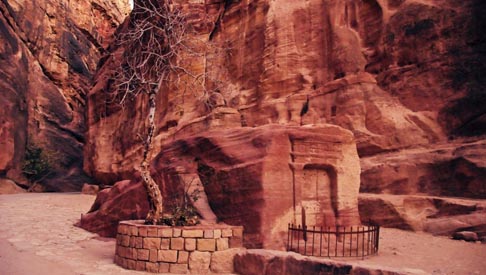
Petra
Your Ultimate destination is the astonishing rose red city of Petra. Once the stronghold of the gifted Nabateans, an early Arab people, Petra was renowned for its massive architecture and the ingenuity of its pools, dam, and water channels. Today, thread your way through a narrow gorge until you come upon colossal ruins cut into the rock magnificent, silent, and unchanged.
In 1812 a Swiss explorer named Johannes Burckhardt set out to ‘rediscover’ Petra; he dressed up as an Arab and convinced his Bedouin guide to take him to the lost city, After this, Petra became increasingly known in the West as a fascinating and beautiful ancient city, and it began attracting visitors and continues to do so today. Petra is also known as the rose-red city, a name it gets from the wonderful color of the rock from which many of the city’s structures were carved. The Nabataeans buried their dead in intricate tombs that were cut out of the mountainsides and the city also had temples, a theater, and following the Roman annexation and later the Byzantine influence, a colonnaded street, and churches. In addition to the magnificent remains of the Nabataean city, human settlement and land use for over 10,000 years can be traced in Petra, where great natural, cultural, archaeological and geological features merge.


The Petra Archaeological Park (PAP) covers a 264 dunum (264,000 square metres) area within Wadi Musa, which is considered a tourism and archaeological site, and a World Heritage Site registered on the UNESCO World Heritage list since 1985. The area encompasses a breathtaking landscape of pink-hued rock mountains, the focus of which is the amazing ancient Nabataean city of Petra, which was carved into the rock more than 2,000 years ago.


